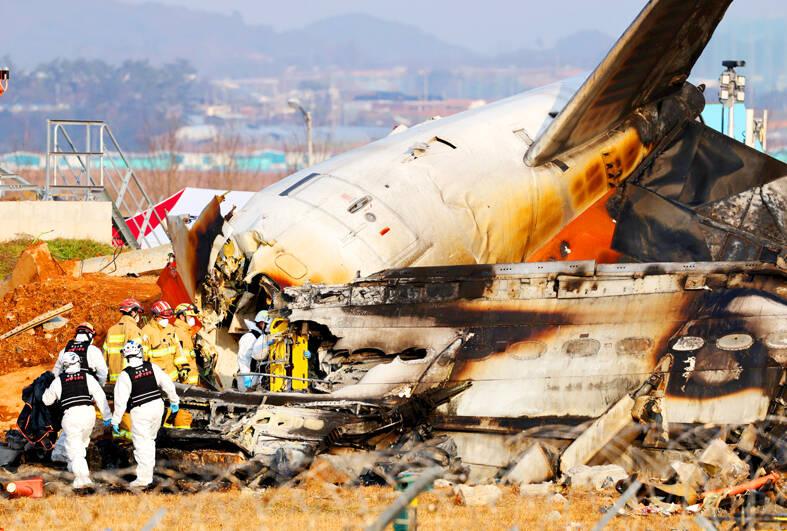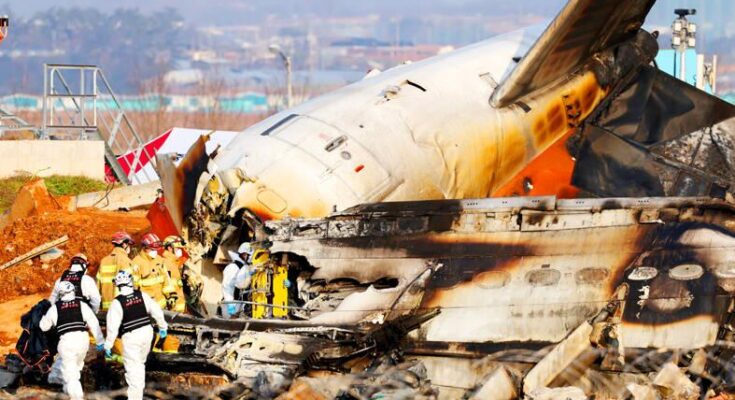Reuters, SEOUL
Both engines of the Jeju Air plane that crashed last month contained duck remains, according to a preliminary report released today, with authorities still trying to determine what caused the deadliest air disaster on South Korean soil.
The six-page report released by South Korean authorities a month after the crash said that both engines of the Boeing 737-800 jet contained DNA from Baikal Teals, a type of migratory duck that flies to South Korea for winter in huge flocks.
However, it provided no initial conclusions about what may have caused the plane to land without its landing gear deployed, and why flight data recorders stopped recording in the final four minutes of the flight.

Firefighters search the wreckage of a Jeju Air aircraft after it crashed at Muan International Airport in South Korea on Dec. 29 last year.
Photo: EPA-EFE
The Jeju Air flight from Bangkok on Dec. 29 overshot Muan Airport’s runway as it made an emergency belly landing and crashed into an embankment containing navigation equipment, called localizers, killing all but two of the 181 people and crew members on board.
In the next steps, the investigation is to tear down the engines; examine components in-depth; analyze in-flight and air traffic control data; and investigate the embankment, localizers and evidence of bird strike, the report said.
“These all-out investigation activities aim to determine the accurate cause of the accident,” it said.
The report highlighted much of the initial findings by the South Korean investigators that were shared with victims’ families on Saturday, including the pilots’ awareness of a flock of birds on the plane’s final approach.
The exact time the bird strike was reported by the pilots remains unconfirmed, the accident report said, but the aircraft “made an emergency declaration (Mayday x 3) for a bird strike during a go-around.”
The report does not say what may have led to the Cockpit Voice Recorder and Flight Data Recorder to stop recording simultaneously just before the pilots declared the emergency.
The aircraft was at an altitude of 152m flying at 161 knots (298kph) about 1.1 nautical miles (2km) from the runway at the moment the flight recorders stopped recording, it said.
The International Civil Aviation Organization (ICAO) requires accident investigators to produce a preliminary report within 30 days of the accident and encourages a final report to be made public within 12 months.
South Korea’s Aviation and Railway Accident Investigation Board has shared its report with ICAO, Thailand, and the US and France, which are the home states for the plane and engine manufacturers, an official said today.



